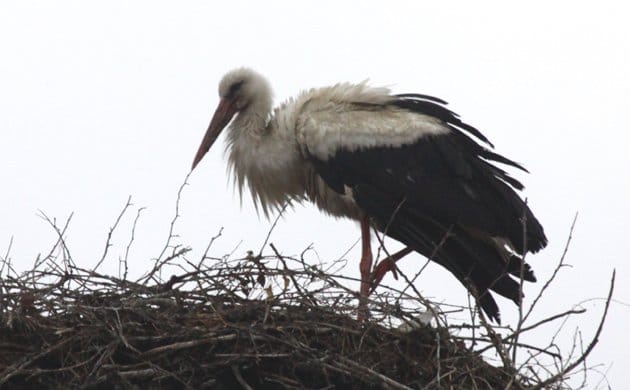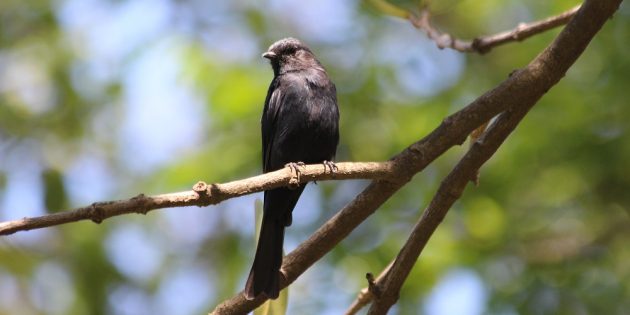
Imagine coming home after a long day at work, pulling into your driveway, looking up on the roof, and seeing a White Stork perched there. Sure, this is normal occurrence across much of Europe and southwest Asia but this particular tale comes from out on the east end of New York’s Long Island, in the town of Medford, where this happened to an unsuspecting non-birder, Celeste Rovner.
Fortunately, she had the presence of mind to get a picture (not the one at the top of this post, which was taken in Hungary).
White Storks are long distance migrants but this would be an astounding record if it were a wild bird. That seems highly unlikely though, as White Storks don’t even like flying across the Mediterranean on their migrations back and forth between Africa and Eurasia. They detour around the eastern end of the sea or to the west where they use the Strait of Gibraltar to get back and forth. In fact, a wild White Stork has never graced the western hemisphere and is missing from the American Birding Association checklist. It seems likely that this individual bird was an escape from a local zoo, as has already been theorized on the New York State listserv.
But, and here is where I will end up pilloried, this wouldn’t be outside the window of a northward migrating White Stork, which usually arrive back on their breeding grounds in late March or early April. And eastern Long Island has seen its share of visitors from the east this year, with everything from Tufted Ducks to Northern Lapwings to a host of Eurasian Wigeons showing up. Not only that, but the bird in the picture shows no sign of having been banded which may have to do with the quality of the image, but still! Imagine the long, lonely flight of a White Stork over the entirety of the Atlantic Ocean, blown off course as it tried to find its way back to its breeding grounds. That’s a lot more fun than a bird that sneaked out of the zoo, isn’t it? (And an update: it seems that the bird was seen two weeks ago a couple of houses down from Celeste’s so it seems even less likely that this is a wild vagrant.)
Regardless of this bird’s provenance the tale of a White Stork on Long Island will make at least one 10,000 Birds beat writer happy.
Thanks to Derek Rogers for getting this story onto the New York State listserv.












Why not ship-assisted? And why does sticking around for a few weeks speak against a vagrant / ship-assisted bird and for an escape? Then I fear for the acceptance of your Gyr, my friend! 🙂
I’d go twitch it if I were you.
Bristol Zoo once had some wing clipped White Storks that bred in an open enclosure and one of the youngsters got away after fledging earlier than expected. It was seen for some time wandering around the UK. I suspect something similar may have happened here – in which case the bird could have originated from anywhere in the eastern US, possibly in previous years. If it was landing on rooftops it sounds like it might be looking to build a nest and was searching for a suitable site – they are not at all shy about nesting around people after all.
There were reports of a White Stork in Oregon or Washington last year as well.
@Jochen: I think that if it ended up here from the fall migration it would have been found previously. And if it is here via spring migration then it is a very early migrant, because I wouldn’t think that a bird that usually gets back to its breeding ground in Eurasia in late March would show up in mid-February in North America. Ship-assist is an interesting idea but I think it is probably unlikely.
Of course it is most likely an escape from a North American zoo. No doubt about that.
But if it was ship-assisted (and I don’t see why that would be unlikely as people on board would surely notice the bird and feed it, contrary to a passerine vagrant), it could be from anywhere along the western coast of Africa, heck, even Cape Town, blown out to see by a local storm.
Furthermore, as Alan already mentioned, they are not shy and generally like to hang out on rooftops, making this a poor indication of an escape.
“Blown out te see the sea”… 😉
Could this stork have been blown in by Hurricane Sandy?
I would be happier if I actually was on Long Island, but yes, I smiled.
This is likely the same stork that was seen in PA last week. Who knows where it was before that!
I saw the stork flying over my backyard in Sayville today!